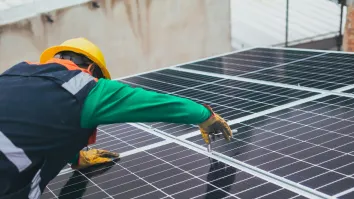
China to halt building new coal power plants abroad
This move is in line with China's carbon neutrality target before 2060.
China will stop building new coal-fired power projects abroad as it targets to achieve net-zero carbon dioxide emissions before 2060, President Xi Jinping said in his address at the United Nations General Assembly.
Xi cited the need to accelerate the shift to a green and low-carbon economy, noting that China plans to peak carbon dioxide emissions before 2030 and achieve carbon neutrality before 2060.
“China will step up support for other developing countries in developing green and low-carbon energy, and will not build new coal-fired power projects abroad,” he said in a pre-recorded video address.
Coal accounted for 56.8% of the total energy consumption in China in end-2020, according to the National Bureau of Statistics of China.
China currently has a 1,080-gigawatt (GW) capacity of coal-fired power generation capacity in 2020, according to a report by the non-government organization, Greenpeace.
The drive toward carbon neutrality is also in China’s 14th Five-Year Plan (2021-2025). It also targets energy consumption per unit gross domestic product (GDP) to decline 13.5% from the 2020 level and reduce carbon dioxide emissions per unit of GDP by 18%.
Analysis firm TransitionZero said in a report in April that replacing China’s coal capacity with clean energy alternatives could save $1.6t or “incur a net negative abatement cost of $20/tCO2 (total carbon dioxide).”
China would also have to close, convert or put into reserve capacity its 364 GW of coal by 2030 to meet its net-zero pledge, cutting in half its carbon intensity of generation from 672 grammes of carbon dioxide equivalent per kilowatt-hour in 2019 to 256 gCO2/kWh, it said.



















 Advertise
Advertise







